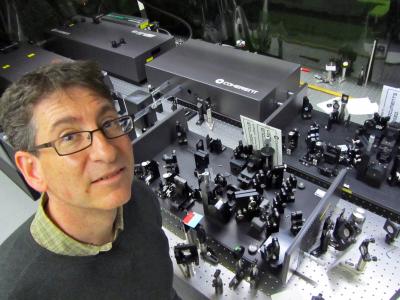The performance of an artificially built device or a living cell is determined by the assembling of nanometer-sized pieces into a structure. Researchers from the University of Oregon and Harvard University have discovered a novel imaging tool to predict and explore such structures.
The new tool integrated superior-performance computer modeling and laser-driven, two-dimensional fluorescence imaging technique. The research team was headed by Andrew H. Marcus, a chemist at the University of Oregon and Aspuru-Guzik, a chemist at Harvard University who resolved the conformation of self-arranged porphyrin molecules into a biological membrane.
 Andrew H. Marcus is a professor of chemistry at the University of Oregon. Credit: University of Oregon
Andrew H. Marcus is a professor of chemistry at the University of Oregon. Credit: University of Oregon
Porphyrins are organic substances present everywhere in living things. The mobile electrical charges that jump from one molecule to another are carried by these Porphyrins, favoring energy transfer and nanoscale communications. They even serve as building blocks of nanoscale devices. The breakthrough restricts the necessity to create molecular crystals that are being examined, stated Marcus, a member of the Oregon Center for Optics, Institute of Molecular Biology and Materials Science Institute. Several beneficial biological molecules do not create crystals easily.
In order to enhance the application of this research in the mechanism of DNA replication, the experimental instrumentation are being modified in the UO's High Stability Optics Lab. Additionally, this approach can be helpful to materials’ researchers working to explore and exploit the needed polymers’ conformation utilized in the manufacturing of nanodevices. The technique is an advancement of previous versions of two-dimensional optical spectroscopy that overcome the limitations related to the applications of nuclear magnetic resonance and X-ray crystallography to such research.
The new method can be incorporated with a single-molecule fluorescence microscope to now enable research at nano- scales, stated Marcus. The fluorescence feature allows viewing and measuring of the happenings in one molecule at a time and this method is anticipated to allow observation of individual molecular assemblies, he added.